| [1] Boucas AP, de Souza BM, Bauer AC, et al.Role of Innate Immunity in Preeclampsia: A Systematic Review. Reprod Sci. 2017;24(10):1362-1370.[2] Dhariwal NK,Lynde GC.Update in the Management of Patients with Preeclampsia.Anesthesiol Clin.2017;35(1):95-106.[3] De Silva DA,Proctor L,von Dadelszen P,et al.Determinants of magnesium sulphate use in women hospitalized at <29 weeks with severe or non-severe pre-eclampsia.PLoS One.2017; 12(12):e0189966.[4] 刁桂杰,林永富,吴德荣,等.孕期补镁与妊娠期高血压疾病发生的关系[J].牡丹江医学院学报,2008, 29(4):30-32.[5] Deng Y,Wang J,He G,et al.Mobilization of endothelial progenitor cell in patients with acute ischemic stroke.Neurol Sci. 2018;39(3):437-443.[6] Ge Q,Zhang H,Hou J,et al.VEGF secreted by mesenchymal stem cells mediates the differentiation of endothelial progenitor cells into endothelial cells via paracrine mechanisms.Mol Med Rep. 2018;17(1):1667-1675.[7] Wang H,Cheng H,Tang X,et al.The synergistic effect of bone forming peptide-1 and endothelial progenitor cells to promote vascularization of tissue engineered bone.J Biomed Mater Res A. 2018;106(4):1008-1021.[8] Brodowski L,Burlakov J,Hass S,et al.Impaired functional capacity of fetal endothelial cells in preeclampsia.PloS One. 2017;12(5):e0178340.[9] Gumina DL,Black CP,Balasubramaniam V,et al.Umbilical Cord Blood Circulating Progenitor Cells and Endothelial Colony-Forming Cells Are Decreased in Preeclampsia.Reprod Sci.2017;24(7):1088-1096.[10] 周燕,邹丽,朱剑文,等.子痫前期患者血管内皮祖细胞数量及生物学功能的变化[J].现代妇产科进展, 2009,18(3):208-211.[11] Katakawa M,Fukuda N,Tsunemi A,et al.Taurine and magnesium supplementation enhances the function of endothelial progenitor cells through antioxidation in healthy men and spontaneously hypertensive rats. Hypertens Res. 2016;39(12):848-856.[12] Almousa LA,Salter AM,Langley-Evans SC.Magnesium deficiency heightens lipopolysaccharide-induced inflammation and enhances monocyte adhesion in human umbilical vein endothelial cells.Magnes Res.2018;31(2):39-48.[13] Pan S, An L, Meng X, et al. MgCl2 and ZnCl2 promote human umbilical vein endothelial cell migration and invasion and stimulate epithelial-mesenchymal transition via the Wnt/ beta-catenin pathway.Exp Ther Med.2017;14(5):4663-4670.[14] Geng J, Wang L, Qu M, et al. Endothelial progenitor cells transplantation attenuated blood-brain barrier damage after ischemia in diabetic mice via HIF-1alpha.Stem Cell Res Ther. 2017;8(1):163.[15] Li X,Jiang C,Zhao J.Human endothelial progenitor cells-derived exosomes accelerate cutaneous wound healing in diabetic rats by promoting endothelial function. J Diabetes Complications. 2016;30(6):986-992.[16] Li X,Chen C,Wei L,et al.Exosomes derived from endothelial progenitor cells attenuate vascular repair and accelerate reendothelialization by enhancing endothelial function . Cytotherapy.2016;18(2):253-262.[17] 李健,董果雄,张社华.镁对血管内皮细胞缺氧再复氧损伤的保护作用[J].中国微循环,2003,7(4):227-229.[18] Luo Q,Zeng J,Li W,et al.Silencing of miR155 suppresses inflammatory responses in psoriasis through inflammasome NLRP3 regulation.Int J Mol Med.2018;42(2):1086-1095.[19] Li BH, Yang K, Wang X.Biodegradable magnesium wire promotes regeneration of compressed sciatic nerves.Neural Regen Res. 2016;11(12):2012-2017.[20] Tangvoraphonkchai K, Davenport A. Magnesium and Cardiovascular Disease. Adv Chronic Kidney Dis.2018; 25(3): 251-260.[21] Hu T,Xu H, Wang C,et al.Magnesium enhances the chondrogenic differentiation of mesenchymal stem cells by inhibiting activated macrophage-induced inflammation.Sci Rep. 2018;8(1):3406.[22] Chollat C, Marret S.Magnesium sulfate and fetal neuroprotection: overview of clinical evidence.Neural Regen Res. 2018;13(12):2044-2049.[23] 孙海英,张志明,王琰.子痫前期与患者血清镁含量的病例对照研究[J].山西医科大学学报,2015,46(7): 658-659.[24] Colunga T,Dalton S.Building Blood Vessels with Vascular Progenitor Cells. Trends Mol Med. 2018;24(7):630-641.[25] Yuan F, Chang S, Luo L, et al. cxcl12 gene engineered endothelial progenitor cells further improve the functions of oligodendrocyte precursor cells.Exp Cell Res.2018;367(2): 222-231.[26] Zhao B,Zhao Z,Sun X,et al.Effect of micro strain stress on proliferation of endothelial progenitor cells in vitro by the MAPK-ERK1/2 signaling pathway. Biochem Biophys Res Commun.2017;492(2):206-211.[27] Liu X,Luo Q,Zheng Y, et al. Notch1 Impairs Endothelial Progenitor Cell Bioactivity in Preeclampsia. Reprod Sci. 2017; 24(1):47-56.[28] Ferguson KK,Meeker JD, McElrath TF, et al. Repeated measures of inflammation and oxidative stress biomarkers in preeclamptic and normotensive pregnancies. Am J Obstet Gynecol.2017;216(5):527.e1-527.e9. [29] 郑浩,李占鲁,沈啸华,等.白藜芦醇抑制叔丁基过氧化物诱导的外周血内皮祖细胞损伤[J].中国病理生理杂志, 2017,33(6): 1073-1079.[30] 潘双.镁离子与锌离子对人血管内皮细胞和平滑肌细胞迁移功能的影响[J].辽宁医学院学报,2017,38(2): 10-12.[31] 商晓盼,李涛,陆雨桐,等.镁离子在骨代谢中的分子机制研究与进展[J].中国组织工程研究,2016,20(48): 7280-7287.[32] Su NY,Peng TC,Tsai PS,et al.Phosphoinositide 3-kinase/Akt pathway is involved in mediating the anti-inflammation effects of magnesium sulfate.J Surg Res.2013;185(2):726-732. |
.jpg)
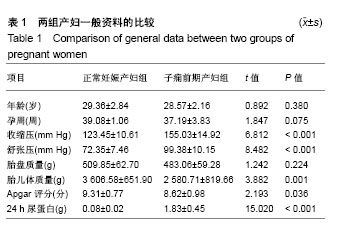
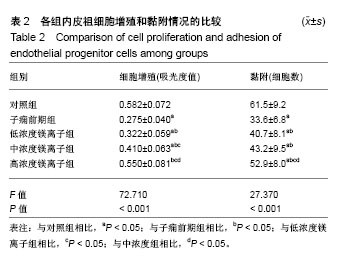
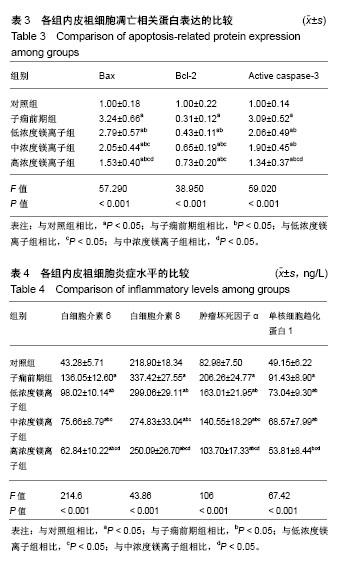
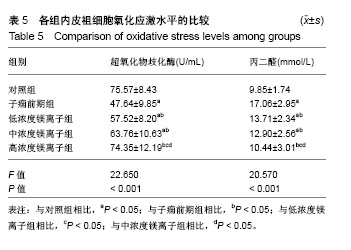
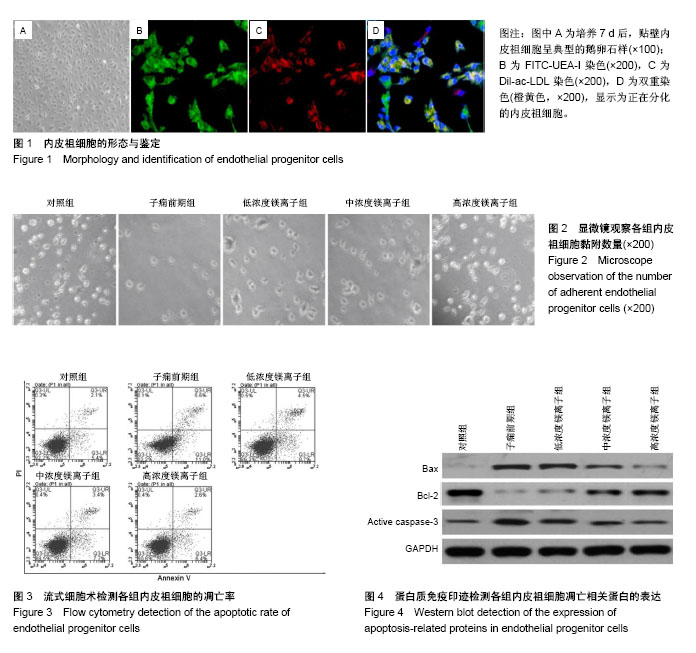
.jpg)
.jpg)